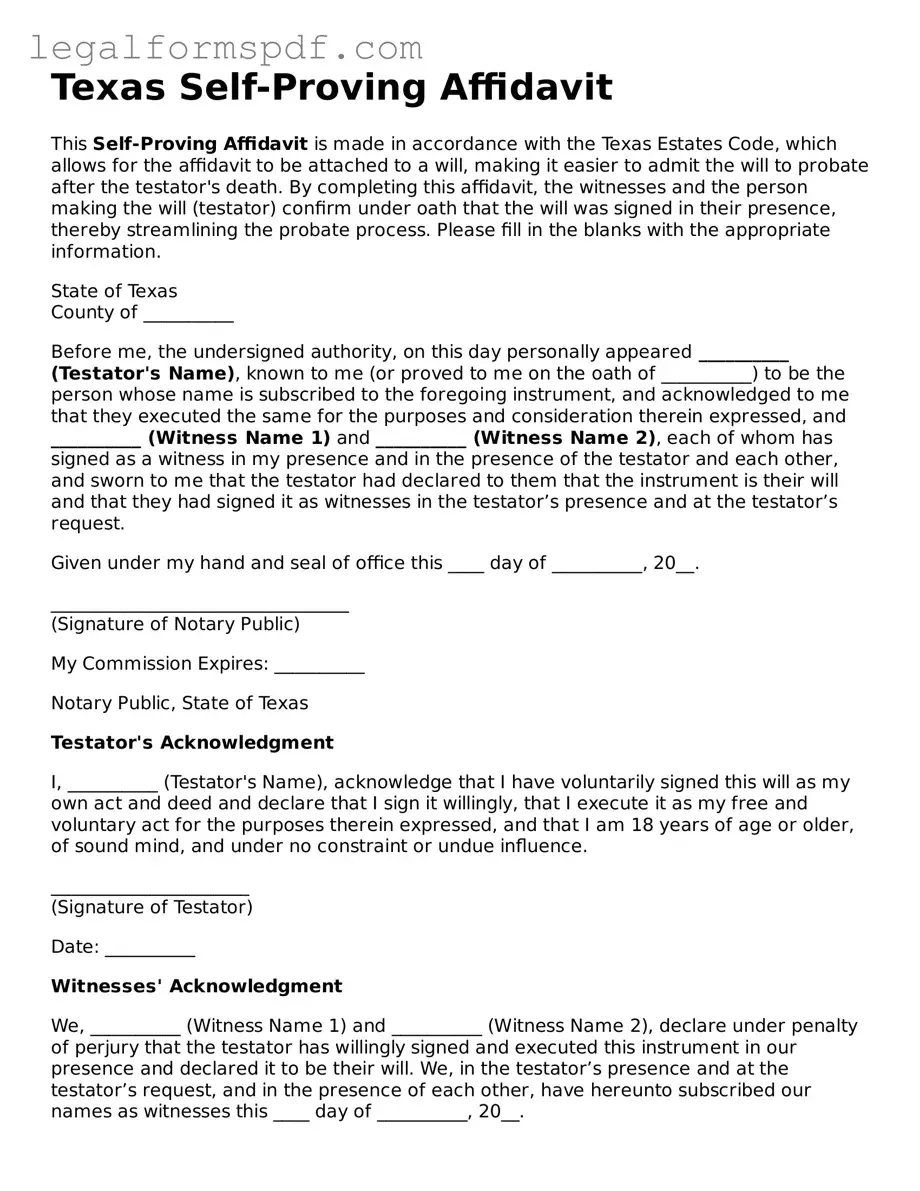Texas Self-Proving Affidavit
This Self-Proving Affidavit is made in accordance with the Texas Estates Code, which allows for the affidavit to be attached to a will, making it easier to admit the will to probate after the testator's death. By completing this affidavit, the witnesses and the person making the will (testator) confirm under oath that the will was signed in their presence, thereby streamlining the probate process. Please fill in the blanks with the appropriate information.
State of Texas
County of __________
Before me, the undersigned authority, on this day personally appeared __________ (Testator's Name), known to me (or proved to me on the oath of __________) to be the person whose name is subscribed to the foregoing instrument, and acknowledged to me that they executed the same for the purposes and consideration therein expressed, and __________ (Witness Name 1) and __________ (Witness Name 2), each of whom has signed as a witness in my presence and in the presence of the testator and each other, and sworn to me that the testator had declared to them that the instrument is their will and that they had signed it as witnesses in the testator’s presence and at the testator’s request.
Given under my hand and seal of office this ____ day of __________, 20__.
_________________________________
(Signature of Notary Public)
My Commission Expires: __________
Notary Public, State of Texas
Testator's Acknowledgment
I, __________ (Testator's Name), acknowledge that I have voluntarily signed this will as my own act and deed and declare that I sign it willingly, that I execute it as my free and voluntary act for the purposes therein expressed, and that I am 18 years of age or older, of sound mind, and under no constraint or undue influence.
______________________
(Signature of Testator)
Date: __________
Witnesses' Acknowledgment
We, __________ (Witness Name 1) and __________ (Witness Name 2), declare under penalty of perjury that the testator has willingly signed and executed this instrument in our presence and declared it to be their will. We, in the testator’s presence and at the testator’s request, and in the presence of each other, have hereunto subscribed our names as witnesses this ____ day of __________, 20__.
______________________
(Signature of Witness #1)
Date: __________
______________________
(Signature of Witness #2)
Date: __________
